Making (Pre-)History
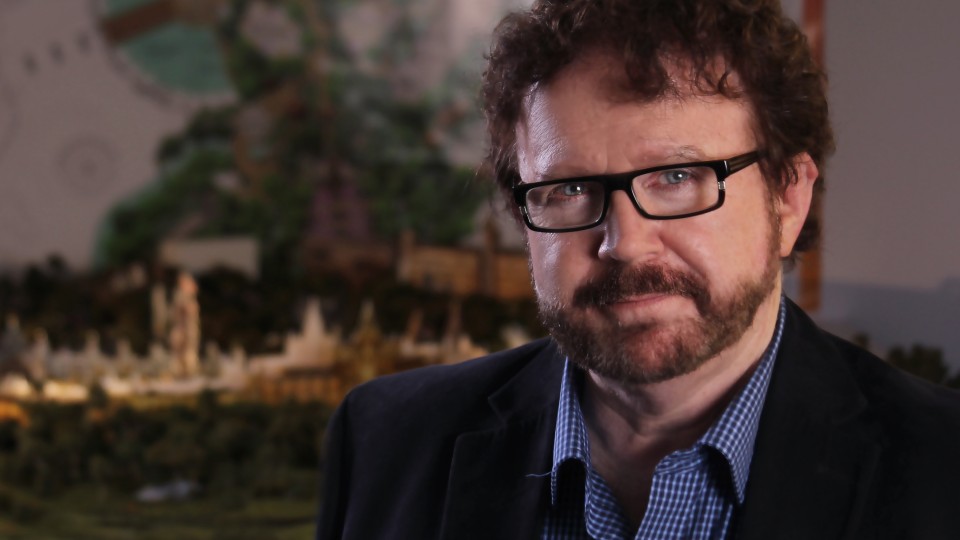
Though Spielberg gets much of the creative credit behind Jurassic Park: The Ride, we’d be remiss if we skipped over a massively pivotal figure in Universal Parks: Gary Goddard and his team at the Goddard Group. (In fairness, we must point out that Goddard has largely exited public life after allegations that connected him to accused sexual predator Bryan Singer, director of the X-Men films.)
In a must-read 2013 interview with Inside Universal, Goddard recalled that development on the ride began even before the film. Since the Jurassic Park script was on lockdown at Spielberg’s Amblin studio, Goddard read Michael Crichton’s original novel to get a grasp of the story. As production of the film began, Goddard said he rallied against the initial expectation that Universal should recreate the film’s iconic Jeep sequence as an attraction, arguing that it would be impossible to have the T. rex chase the Jeep or tear through trees convincingly enough to live up to the film.

Instead, Goddard remembered a scene from the book that never made it to the film, in which young protagonist Tim climbs aboard a closed-off boat ride not yet ready for the public (due to dilophosaurs spitting at the test boats). The idea offered an opportunity to add a real, standalone ride to Universal Studios Hollywood while also offering a thrilling drop and a splash that would make the ride a favorite of teens. Better yet, a boat-based ride would also make great sense for duplication in hot and humid Orlando at the new Universal Studios Florida.
But would Steven agree? Goddard told Inside Universal, “Steven liked the idea of a boat ride as it was inspired by a chapter in the book and would cover ground not seen in the movie, while remaining true to the spirit and mythology. Because Steven liked it, the Jeep Ride became a Boat Ride instead.” In other words, a boat-based Jurassic Park ride might not have been seen in the film, but it would feel like something the “real” park would’ve plausibly featured just off-screen… an experience that fused the film’s aesthetic with a literary origin.

The initial (rare, Passholder-exclusive) Goddard Group concept above clearly resembles the final product but for at least one very big difference: the removal of a domed pterodactyl exhibit (later used in Jurassic Park III). Goddard said, “you never get 100% of what you want. Not at Disney, not at Universal – it’s just part of the reality.”
But what Steven loved most, according to Goddard, were the scaled models the Goddard Group built for the ride. The idea is to create a physical model that’s staged on tables that allow the “rider” to walk through the entire ride with the eyes at the same level they would be if sitting in the boat.
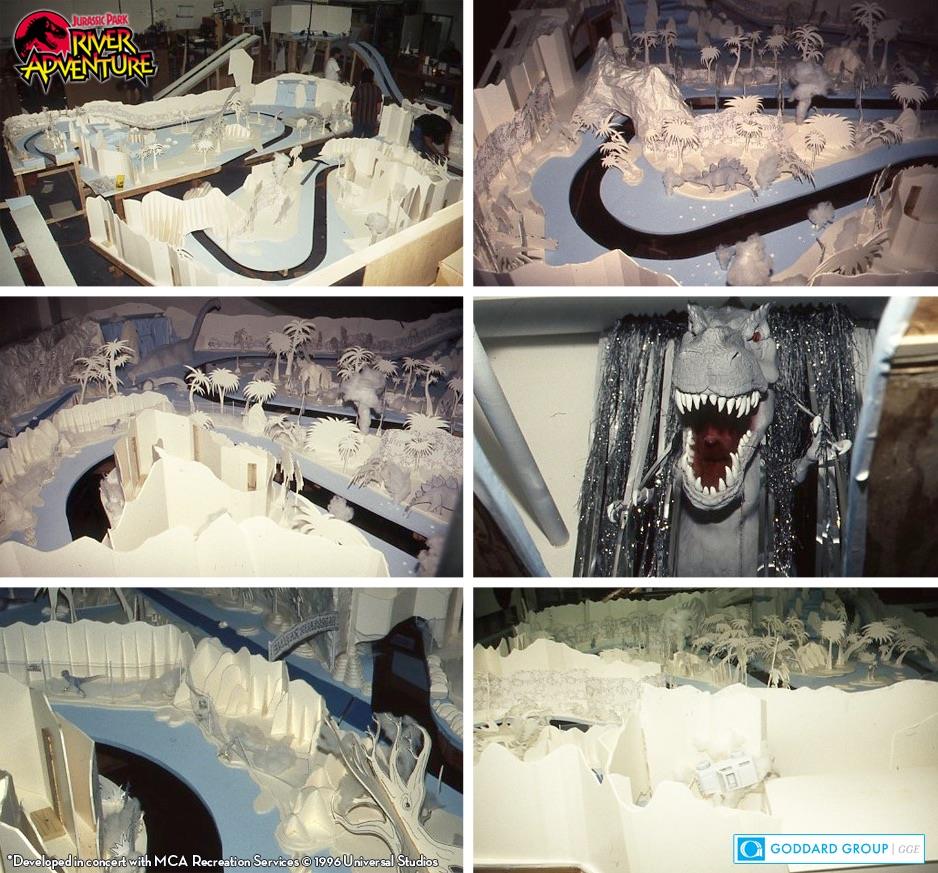
Goddard said, “I took [Spielberg], Sid Sheinberg, and Barry Upson [Sr. V.P. of Design and Planning at Universal] through the entire experience. Steven loved it and mentioned he had never seen a model done like that before. It allowed him to ‘see’ the ride in a very compelling way. Beyond that, during regular story meetings, Steven would provide directional ideas having to do with everything from staging to ‘gags’ that he liked or didn’t like.”

As production finished on the film, the ride project team moved in, re-using the movie’s sets to film pre-show videos before they were demolished, starring the distinguished Richard Attenborough (the film’s John Hammond) with cameos by Spielberg himself.
Constructed in Universal Studios Hollywood’s Lower Lot, Jurassic Park: The Ride’s chute-the-chutes track and ride system was manufactured by Vekoma. Among the ride’s more sensational statistics are its 7-minute ride time, more than a dozen Audio-Animatronics (many in water and unprotected, despite Goddard’s arguments), 1,900 foot long flume, and an 85-foot drop at 51°.
Jurassic Park: The Ride opened at Universal Studios Hollywood just in time for summer – June 21, 1996. As with any ride spurred by the “Ride the Movies” era, its opening was a star-studded affair. Among the guests in attendance at the ride’s grand opening celebration were film cast members Jeff Goldblum, Ariana Richards and Joseph Mazzello… Naturally, Steven Spielberg also attended the opening… but requested that he be let off of the attraction just before the 85-foot drop.
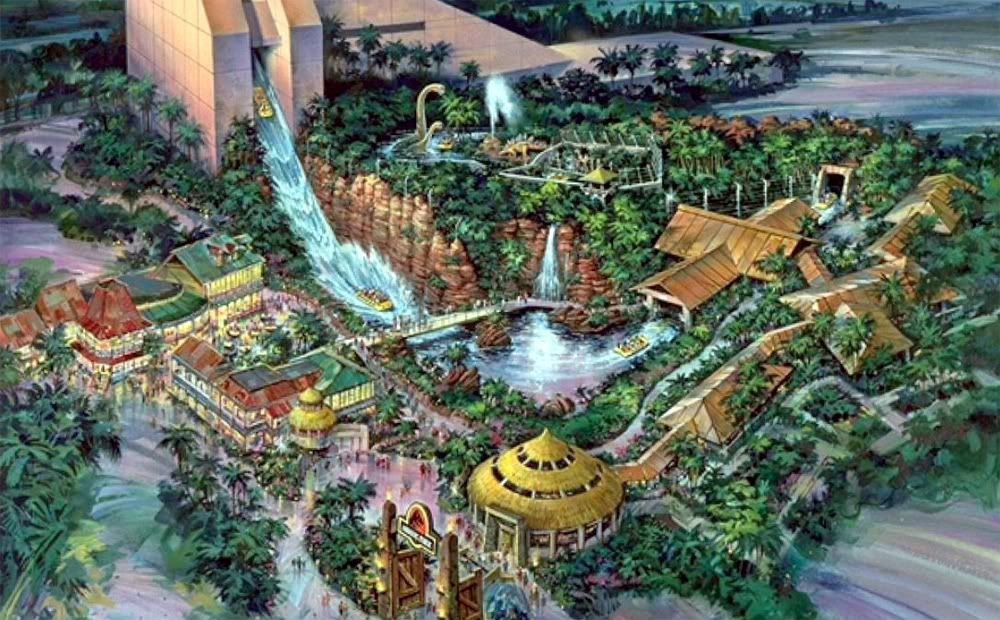
Put on your ponchos… it’s time to climb aboard.
Jurassic Park: The Ride
While Disney Imagineering is hard at work building the Kilimanjaro Safaris attraction planned for the in-production Animal Kingdom park, Universal Studios Hollywood already has a journey through the “real” habitats of a living zoological collection… it’s just that Universal’s animals are prehistoric.
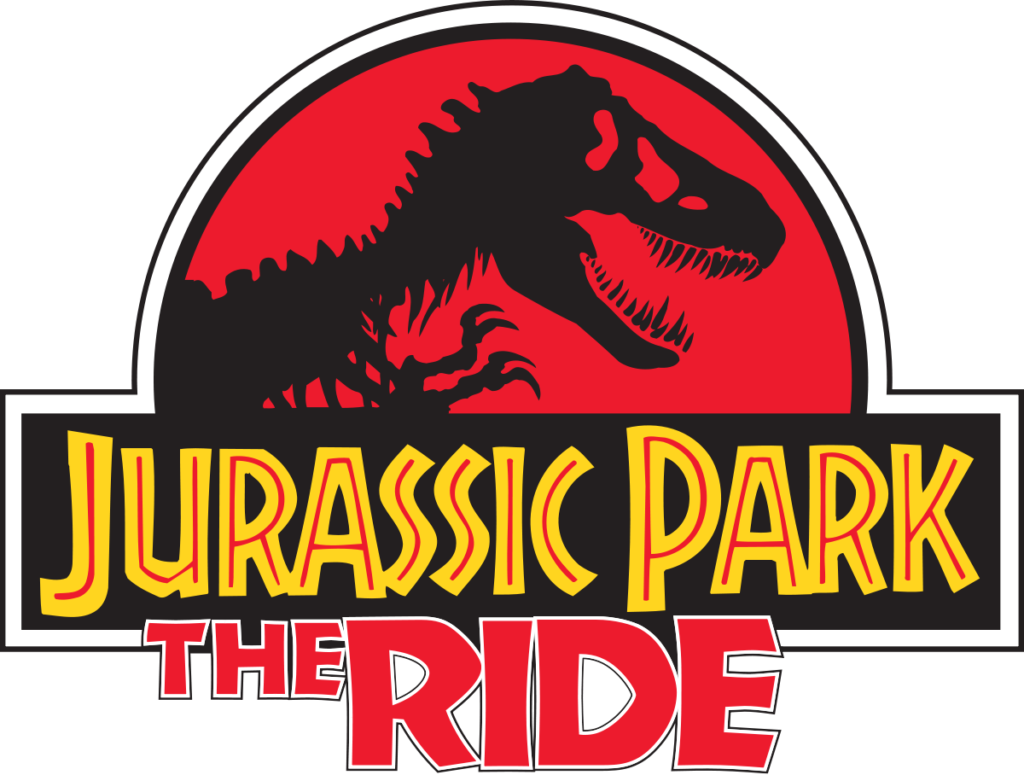
But that’s what Jurassic Park: The Ride is: a leisurely, sightseeing cruise along the waterways that connect the herbivore habitats within this unbelievable, one-of-a-kind theme park. Where else can you glimpse creatures extinct for 65 million years or more, in the flesh?
As the bright yellow and red rafts set off from the ride’s loading area, they’re carried up a small hill and tipped forward into a river channel. With a slosh, the boats settle into the river as it curves to the left, light piercing through the arched trellis tunnel overhead and the Costa Rican flowers entwined throughout it.
“Time… the ever-flowing river. Come with us now to a time before Man…” ahead, the iconic wooden doors of Jurassic Park’s entry appear. “…when the river flowed through a newborn world and giants walked the Earth..” With a resounding creak, the doors part as John Williams’ score swells.
“Welcome… to Jurassic Park.”
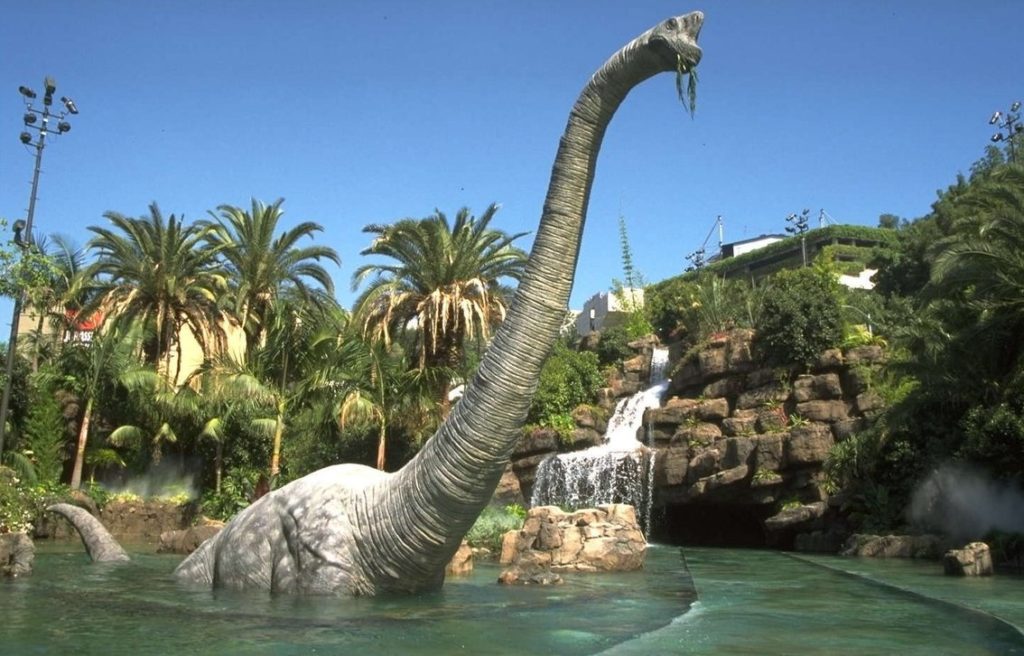
The swinging doors reveal beyond a sprawling pond marked “Ultrasaur Springs,” with a massive, towering, long-necked dinosaur wading in the water. At first, its head resembled a bent palm tree, tucked behind a rock, until it lifts up to its full height, chewing on seaweed pulled from the lagoon floor. “The ultrasaurs in this lagoon are the largest creatures to ever live on the Earth. Despite their awsome size, these gentle giants pose no threat to us.” As the boat sails beneath, water drips from their mouths and onto riders below.
We drift into a cave carved from a pounding waterfall, emerging in a jungle grotto of spitting geysers and jagged rockwork. “Ahead in Stegosaur Springs, our journey continues. Head armor protects these great beasts from savage predators of the period.”
Our cruise sails toward a gargantuan stegosaurus standing on a high rocky outcropping ahead, with a waterfall pouring past its feet. Primeval geysers erupt, spraying it – and us – with water.
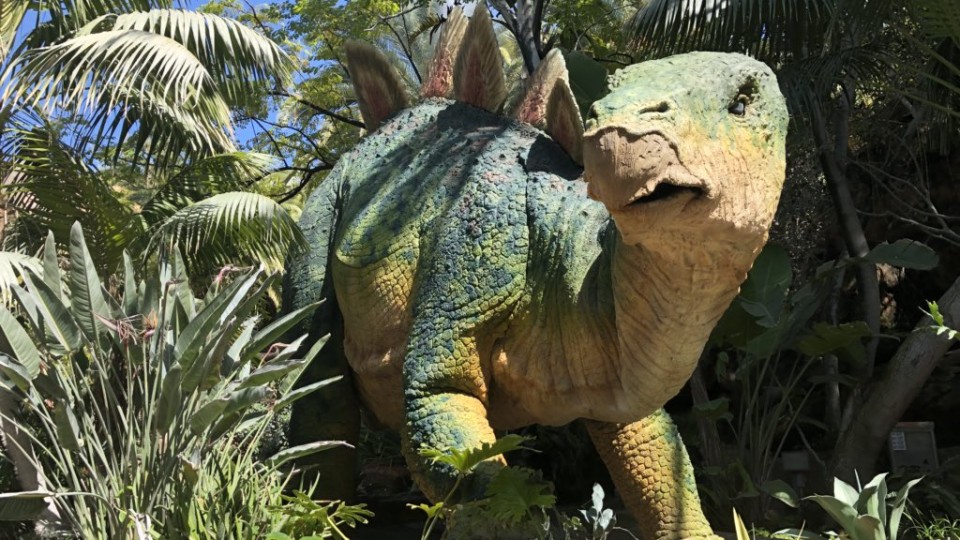
But oh, the vegetation to our right suddenly reveals an even larger stegosaurus mere inches from the boat, vocalizing and dipping its tail in he cool water. Turns out the one above us is a big baby.
“Jurassic Park scientists provide our herbivore friends a healthy diet of organic diet insuring healthy growth and balance of our ecosystem… Next up on our tour: Hadrosaur Cove…” To the left, a duck-billed dinosaur pokes its head out of the water, then dips back down into the river. A thud signals that it’s passed directly beneath us… and indeed, the dinosaur pops up playfully on the right, emitting friendly vocalizations and teasingly spraying water from its nose.
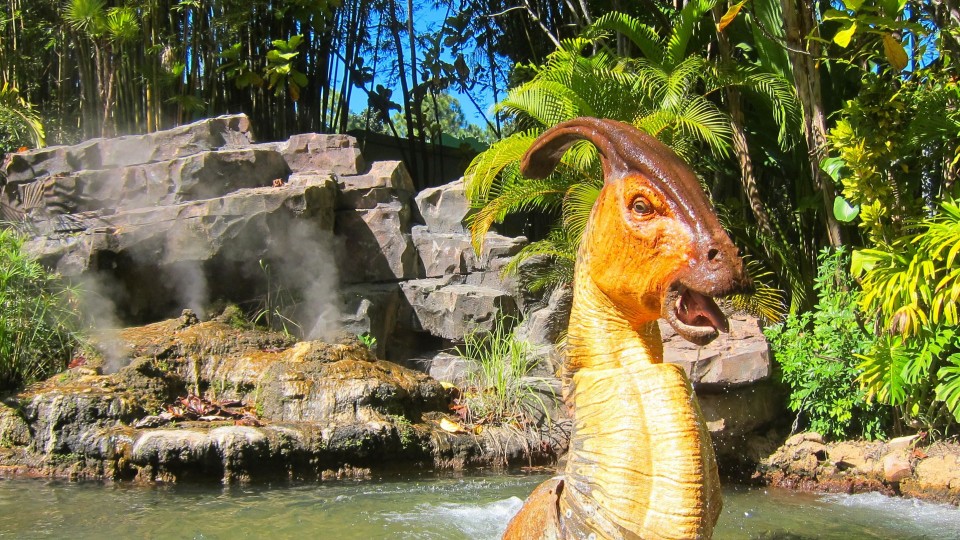
But wait… the Hadrosaur seems to have knocked the boat off course… The drifting boat misaligns from the marked entrance to Hadrosaur Cove ahead on the right, instead diverting left toward the industrial, barbed-wire entrance to a backstage area… As we drift to the left, the pleasant narration of our announcer grows more and more distant… “…Unlike the viscious carnivores in the compound to our left, here in Hadrosaur Cove we find the charming, duck-billed parasaurolophus…”
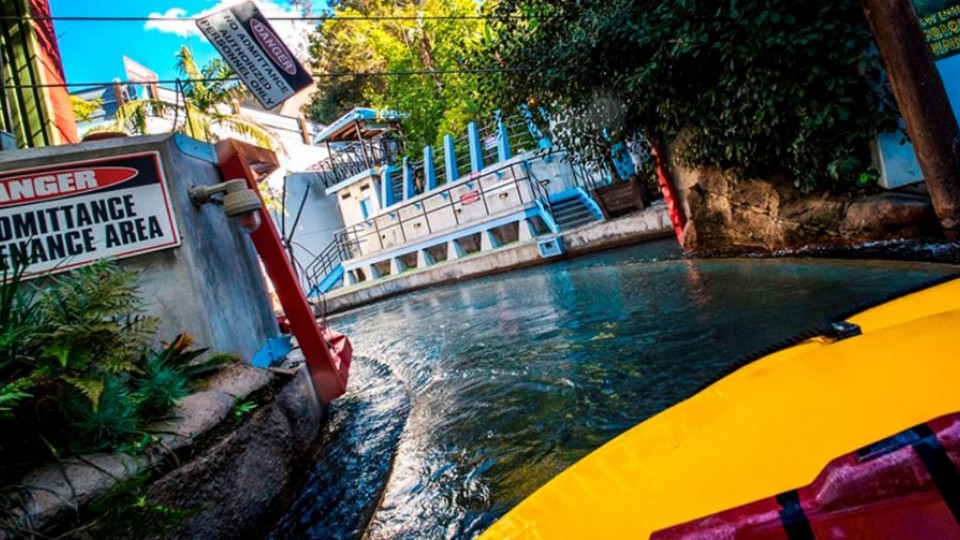
In fact, the boat had indeed been diverted down an auxiliary river channel into the inner workings of Jurassic Park: the unsightly, industrial facilities that provide the illusion of untouched prehistoric peace.
In fact, the first sight is one easily identifiable to fans of the film: the highly-protected Velociraptor pen… and indeed, as the narration of the tour fades away, the sound of crackling electricity and radio distress calls fills the air instead… And in the pen, tree branches sway as if something is moving in there…
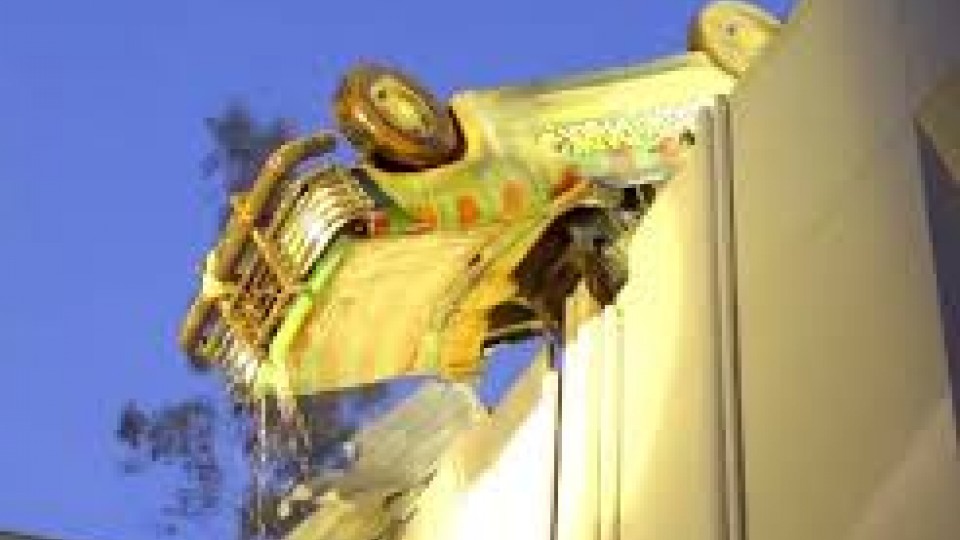
And our (un)luck would have it, we’ve stumbled into Jurassic Park on a very, very bad day. Rounding the corner, the boat travels past another Jurassic Park tour boat, beached along the industrial waterway… a distant roar echoes from atop the towering concrete wall to the right, then a resounding boom. rounding the corner, we see why: a Jurassic Park Jeep is perched along the ride of the wall, stomped and smashed by… something big.
It teeters on the edge, then tips and falls into the water in a rain of sparks, its lights flashing. It hits the water, splashing guests, as its horn blares.
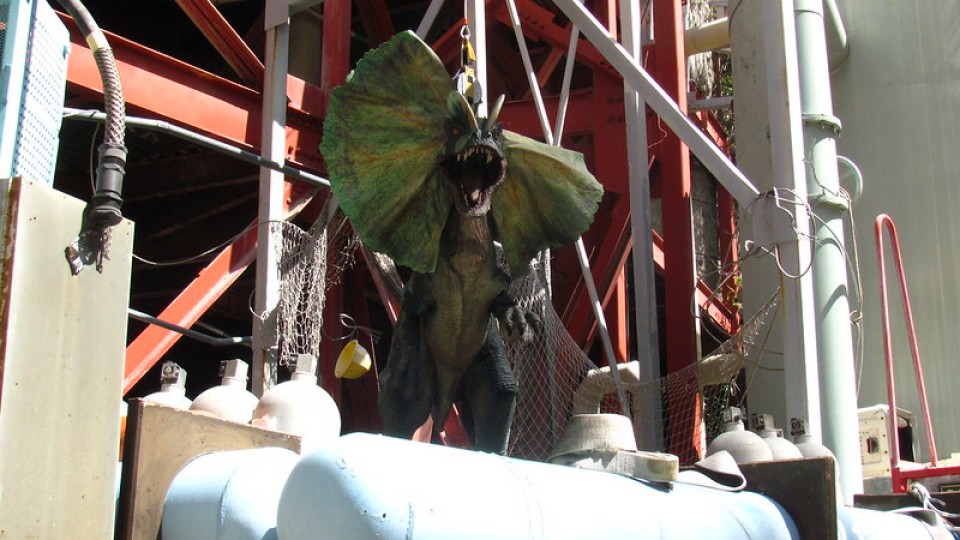
Around the corner, guests see the only means of escape: the Environmental Systems building. But before they can get inside, dilosophosaurus (the “spitters”) spring up, their frilled necks vibrating as they spit their deadly venom at riders.
The boat is hauled into the Environmental Systems building and engages with a lift. At every possible level of escape, loose velociraptors prevent the ride from evacuating. (An original scene here envisioned by the Goddard Group had a live actor attempt to save riders before being attacked by a surprise velociraptor animatronic, necessitating their continued ascent.)
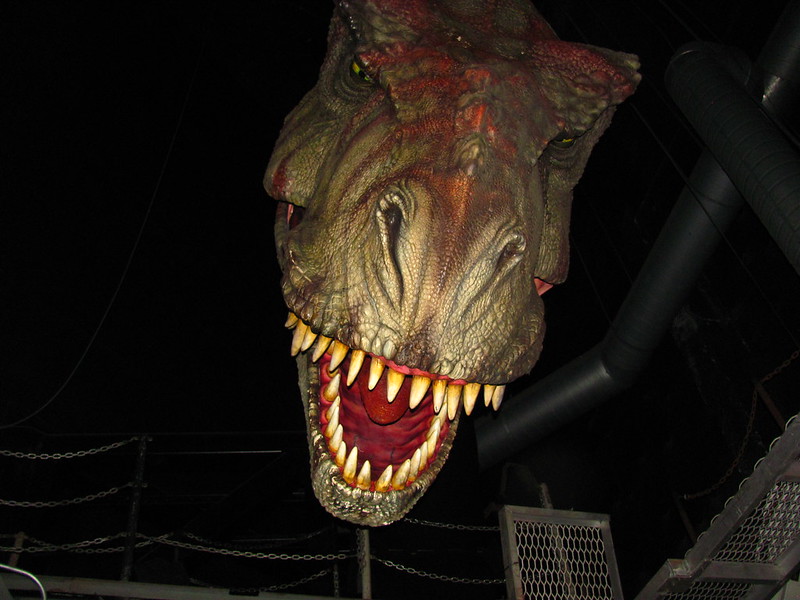
Ultimately, hoisted high up into the building and lost among its maze of catwalks, pipes, returns, and hardware, the T. rex itself makes its first appearance, its massive jaws crashing through overhead pipes like they were drinking straws. It gnashes at guests, but can’t quite reach… yet.
“Warning,” a pleasant pre-recorded voice begins, “Toxic gases are present. Life support systems will terminate in: 15 seconds.” As a flurry of warning lights and screaming radio chatter envelopes the boat, it drifts ahead toward a massive waterfall: the hidden source of the boat ride’s flow… A-ha! If this waterfall is the origin of the ride’s river, we can topple over the edge and get to safety! If only it weren’t an 85 foot drop… gulp…

“…7, 6, 5, 4…” Just as we reach the height of the building, the waterfall parts. From behind, a massive, full-sized T. rex swings forward through the parted water, literally flying toward guests. It throws it head back with a deafening roar, then – just as we tip over the drop’s edge – it lowers its jaws within inches of the boat.
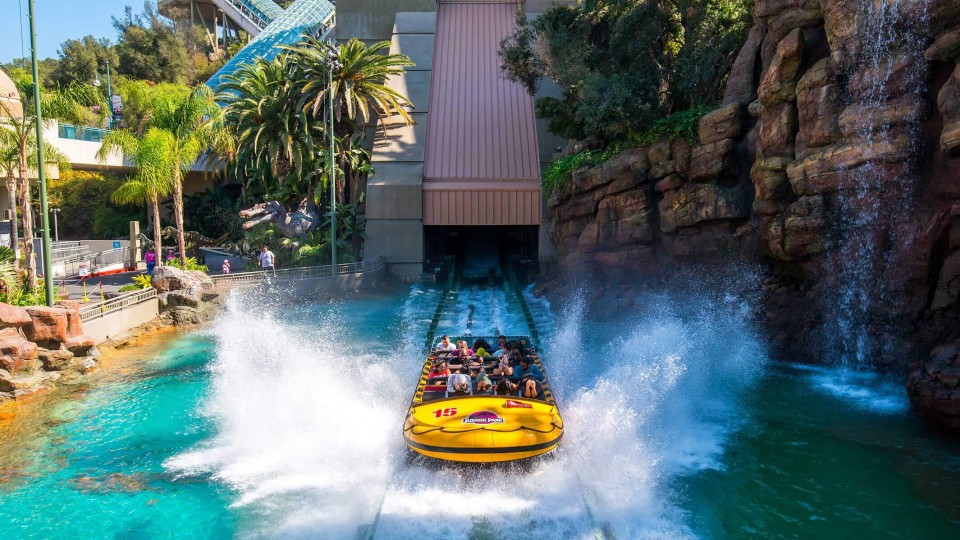
The raft flies down the auxiliary water channel, bursting out of the Environmental Systems building in a cascade of water. Just like that, we’re back “on stage,” having narrowly escaped the hunger of the wildest predator the world’s ever known.
Enjoy a serene, moonlit cruise through the perfectly-safe animal habitats of the Jurassic jungles aboard Universal Studios Hollywood’s legendary-and-lost JURASSIC PARK: The Ride:
From California to Florida
Jurassic Park debuted in 1993.
Jurassic Park: The Ride launched its first rafts in 1996.
And through it all, Jurassic Park and the popularity of dinosaurs showed no signs of slowing down. How would Universal take advantage of its stellar new attraction? Where would it be duplicated next, and how?

An attraction as ambitious as Jurassic Park: The Ride would be a natural candidate for inclusion at the still-young Universal Studios Florida that had opened in 1990. Like in Hollywood, the larger-than-life adventure ride would feel right at home alongside other movie masterpiece Lost Legends: JAWS, Back to the Future: The Ride, and Kongfrontation. In fact, a section along the park’s lagoon (the current site of Men in Black: Alien Attack) was allegedly eyed as the future site of a Floridian Jurassic Park: The Ride.
But curiously, dirt wasn’t moving in Orlando’s park… That’s because, by the mid-’90s, it was decided that Jurassic Park wouldn’t be added to Universal Studios Florida at all. But that didn’t mean the ride wouldn’t come to Orlando…


